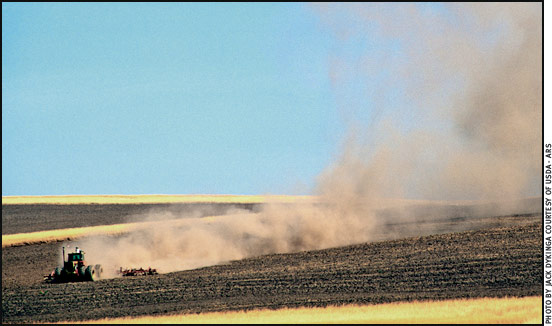 Fingerprinting Fugitive Dust
Fingerprinting Fugitive Dust
Each community of soil microbes has a unique fingerprint that can potentially be used to track soil back to its source, right down to whether it came from dust from a rural road or from a farm field, according to a U.S. Department of Agriculture (USDA) soil scientist.
Ann Kennedy, at the Agricultural Research Service (ARS) Land Management and Water Conservation Research Unit in Pullman, Wash., studies the biological properties of soils that affect wind erosion. She analyzes the soil for the fatty acid or lipid content from the community of soil microbes living in the soil. It is this lipid content that forms the living community's fingerprint.
Although Kennedy focuses on the soils of the Columbia Plateau region, which spans parts of Idaho, Oregon and Washington State, she also works with ARS scientists in Colorado, Idaho, Missouri and Texas on fingerprinting soils. The scientists exchange soil samples to study a variety of soils from different regions.
Interestingly, microbial communities from dirt and gravel roads differed from adjacent agricultural soils, whether in Washington or Texas. Apparently, the microbial communities found on roads change with time because of the lack of plants and restricted water infiltration on roads, compared to cropland.
 Ultimately, Kennedy and her colleagues are looking for management practices that will keep the soil from blowing in the first place.
Ultimately, Kennedy and her colleagues are looking for management practices that will keep the soil from blowing in the first place.
Read more about this research, which supports the USDA commitment to sustainable agriculture, in the July 2011 issue of Agricultural Research magazine.
Editor's Note: This article was adapted from a news release by ARS.








